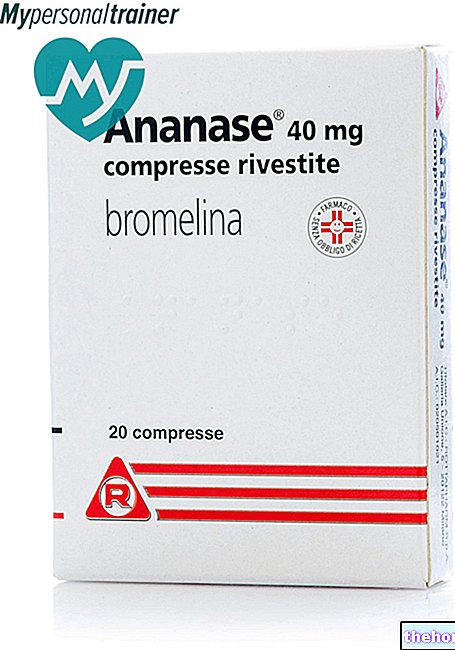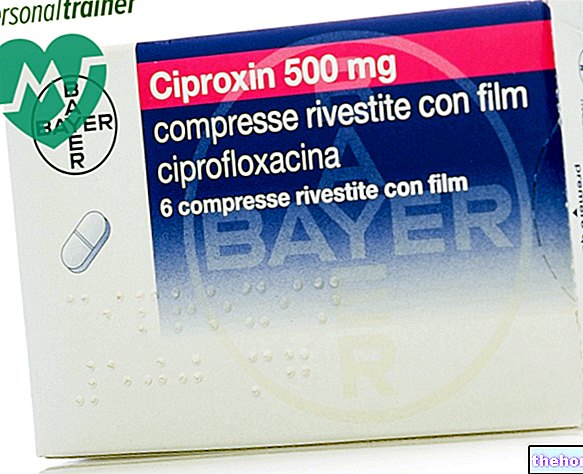Active ingredients: Chondroitin (Sodium Chondroitin Sulphate)
CONDRAL 400 mg hard capsules
CONDRAL 400mg granules for oral solution
CONDRAL 800mg granules for oral solution
Why is Condral used? What is it for?
What is CONDRAL
CONDRAL is a sodium chondroitin sulphate-based medicine which belongs to the class of polysaccharides. Chondroitin sulfate is an important component of cartilages, the supporting tissues present in the joints
What is it for
CONDRAL is indicated in adults for the treatment of symptoms of osteoarthritis of the knee and hip.
What is osteoarthritis?
Osteoarthritis is a very common disease, especially in adults, caused by an alteration of the cartilage tissue in the joints.
The symptoms of osteoarthritis are: pain in the joints, stiffness after rest, reduced ability to move the joints and in some cases deformation of the joints.
Contraindications When Condral should not be used
Do not take CONDRAL:
- if you are allergic to sodium chondroitin sulphate or chemically similar substances, or to any of the other ingredients of CONDRAL (see section "What CONDRAL contains").
Precautions for use What you need to know before taking Condral
Talk to your doctor before taking CONDRAL
- if you suffer from any type of allergy.
Children and adolescents
The use of CONDRAL in children and adolescents below 18 years is not indicated as safety and efficacy have not been established in this patient group.
Interactions Which drugs or foods can modify the effect of Condral
Tell your doctor or pharmacist if you are taking, have recently taken or might take any other medicines, including medicines obtained without a prescription. To date, no interactions with other medicines are known.
Warnings It is important to know that:
If you are pregnant or breast-feeding, think you may be pregnant or are planning to have a baby, ask your doctor or pharmacist for advice before taking this medicine.
If you are pregnant or breastfeeding, use this medicine only when clearly needed and under direct medical supervision.
Driving and using machines
CONDRAL does not affect the ability to drive and use machines.
CONDRAL granules contains:
- sorbitol: if you have been told by your doctor that you have "intolerance to some sugars (for example sorbitol), contact your doctor before taking this medicine;
- sunset yellow (E110): can cause allergic reactions;
- sodium: to be taken into consideration in people with reduced kidney function or who follow a low sodium diet. In particular, the 400 mg granules contain 1.65 mmol (38 mg) of sodium per dose, while the 800 mg granules contain 3.30 mmol (76 mg) of sodium per dose.
CONDRAL hard capsules contain:
- sodium, 1.59 mmol (37 mg) per dose: to be taken into consideration in people with reduced kidney function or on a low sodium diet.
Dose, Method and Time of Administration How to use Condral: Posology
Always take CONDRAL exactly as your doctor has told you. If in doubt, consult your doctor or pharmacist.
The recommended dose, unless otherwise prescribed, is:
- 400 mg capsules: 2 to 3 capsules per day by mouth
- 400 mg sachets: 2 to 3 sachets per day by mouth
- 800 mg sachets: one sachet per day by mouth.
The contents of the sachets must be dissolved in water before taking.
The duration of treatment should not be less than 3 weeks.
Overdose What to do if you have taken too much Condral
If you take more CONDRAL than you should
If you take more CONDRAL than you should, contact your doctor or go to the nearest hospital.
If you forget to take CONDRAL
Do not take a double dose to make up for a forgotten dose.
If you stop taking CONDRAL
If you have any further questions on the use of this medicine, ask your doctor or pharmacist.
Side Effects What are the side effects of Condral
Like all medicines, CONDRAL can cause side effects, although not everybody gets them.
Reactions such as nausea, diarrhea, pain, abdominal discomfort and skin reactions may appear upon initiation of therapy but are usually rare and mild in severity.
The following side effects have been reported during treatment with CONDRAL, listed according to frequency:
Rare (may affect up to 1 in 1000 people):
- dizziness
- pain in the upper abdomen
- diarrhea
- nausea
- stomach and intestinal disorders
- redness of the skin (erythema)
- skin rash including red spots and blisters (maculo-papular rash and rash).
Very rare (less than 1 in 10,000 people):
- redness of the skin accompanied by itching (hives)
- inflammation of the skin accompanied by itching (eczema)
- itch
- swelling (edema).
Reporting of side effects
If you get any side effects, talk to your doctor. This includes any possible side effects not listed in this leaflet. You can also report side effects directly via the national reporting system at https://www.aifa.gov.it/content/segnalazioni-reazioni-avverse
By reporting side effects you can help provide more information on the safety of this medicine.
Expiry and Retention
CONDRAL hard capsules: Do not store above 30 ° C.
CONDRAL granules: this medicinal product does not require any special storage conditions.
Do not use this medicine after the expiry date which is stated on the carton after Expiry. The expiry date refers to the last day of that month.
Do not throw any medicines via wastewater or household waste. Ask your pharmacist how to throw away medicines you no longer use. This will help protect the environment.
Keep this medicine out of the sight and reach of children.
What CONDRAL contains
CONDRAL hard capsules
- The active ingredient is sodium chondroitin sulfate. Each hard capsule contains 400 mg of sodium chondroitin sulfate.
- The other ingredients are: magnesium stearate, gelatin, titanium dioxide (E171), indigo carmine (E132), quinoline yellow (E104).
CONDRAL granules
- The active ingredient is sodium chondroitin sulfate. Each sachet contains 400 mg or 800 mg of sodium chondroitin sulfate.
- The other ingredients are: citric acid, sodium saccharin (see section "CONDRAL granules contains sodium"), orange flavor, sunset yellow (E 110) (see section "CONDRAL granules contains sunset yellow (E110)"), sorbitol (see section " CONDRAL granules contains sorbitol "), anhydrous colloidal silica.
What CONDRAL looks like and contents of the pack
CONDRAL hard capsules are blue-green, packed in blisters. They are available in cartons containing 20 hard capsules.
CONDRAL granules for oral solution 400 mg is packed in sachets. They are available in a box containing 20 sachets.
CONDRAL granules for oral solution 800 mg is packed in sachets. They are available in a box containing 20 sachets.
Not all pack sizes may be marketed.
Source Package Leaflet: AIFA (Italian Medicines Agency). Content published in January 2016. The information present may not be up-to-date.
To have access to the most up-to-date version, it is advisable to access the AIFA (Italian Medicines Agency) website. Disclaimer and useful information.
01.0 NAME OF THE MEDICINAL PRODUCT
CONDRAL
02.0 QUALITATIVE AND QUANTITATIVE COMPOSITION
Each capsule contains
Active principle:
400 mg of sodium chondroitin sulfate
Each sachet of granules contains
Active principle:
400 mg of sodium chondroitin sulfate
Each sachet of granules contains
Active principle:
800 mg of sodium chondroitin sulfate
For the full list of excipients, see section 6.1.
03.0 PHARMACEUTICAL FORM
Hard capsules.
Granules for oral solution.
04.0 CLINICAL INFORMATION
04.1 Therapeutic indications
Symptomatic treatment of osteoarthritis of the knee and hip.
04.2 Posology and method of administration
Unless otherwise prescribed by a doctor, the following dosage schedule is recommended, to be followed for a period of not less than 3 weeks:
400 mg capsules and sachets: from 2 to 3 capsules or sachets orally / day, according to the severity of the disease;
sachets 800 mg: 1 sachet orally / day.
The contents of the sachets must be dissolved in water before taking.
Use in children
There is no evidence to support the use of chondroitin sulfate in children up to 18 years of age. The use of chondroitin sulfate in children is therefore not recommended.
04.3 Contraindications
Hypersensitivity to the active substance or to other closely related substances from a chemical point of view and / or to any of the excipients.
04.4 Special warnings and appropriate precautions for use
The use of the preparation is not recommended in subjects particularly prone to allergies.
CONDRAL granules for oral solution contains sorbitol. Patients with rare hereditary problems of fructose intolerance should not receive this medicine.
04.5 Interactions with other medicinal products and other forms of interaction
There are no known interactions or incompatibilities with other medicaments.
No interaction studies have been performed.
04.6 Pregnancy and lactation
In pregnant and breastfeeding women, the product should only be administered in cases of real need and under the direct supervision of the doctor.
Pregnancy: No clinical data on exposure in pregnancy are available for the product.
Animal studies do not indicate direct or indirect harmful effects related to pregnancy, embryo-fetal development, parturition and postnatal development.
Prescribe the drug with caution in pregnancy.
Lactation: It is not known whether the product is excreted in human milk nor has its excretion in milk been studied in animals. The decision whether to continue or discontinue breastfeeding or to continue or discontinue therapy with CONDRAL must be made considering the benefit of the drug. breastfeeding for the baby and the benefit of therapy with the product for the mother.
04.7 Effects on ability to drive and use machines
CONDRAL does not affect the ability to drive or use machines.
04.8 Undesirable effects
Adverse reactions are rare (nausea, diarrhea, pain, abdominal discomfort, and skin reactions may appear with initiation of therapy but are usually rare and mild in severity.
Adverse reactions observed during post-marketing surveillance are presented in the following table.
In each category, adverse reactions are ranked according to frequency of onset and severity, using the following convention: very common (> 1/10); common (> 1/100, 1 / 1,000, 1 / 10,000,
The most appropriate MedDRA term has been used to describe the reactions listed above. Synonyms or related conditions are not listed but should still be considered.
04.9 Overdose
No cases of overdose have been reported.
05.0 PHARMACOLOGICAL PROPERTIES
05.1 Pharmacodynamic properties
Pharmacotherapeutic group: other drugs for diseases of the musculoskeletal system. ATC code: M09AX.
The active ingredient chondroitin sulfate of CONDRAL belongs to the class of polysaccharides, more precisely of the glycosamino-glycans. They are one of the main constituent elements of cartilage where they are found bound to proteins to form the so-called proteoglycans, which ensure the mechanical-elastic properties of the cartilage itself. In articular degenerative processes of the arthritic type, a decrease in the content of cartilaginous chondroitin sulphate is observed with a consequent reduction in the fixing power of water and subsequent progressive deterioration of joint function due to degeneration of the cartilage itself.
The supply of exogenous chondroitin sulphate compensates for the cartilage deficit, allowing an arrest or slowing down of the degenerative process and an optimal realization of spontaneous reparative processes.
At the level of the articular cartilage, in fact, chondroitin sulphate is able to antagonize joint degenerative processes, above all through the inhibition of cartilaginous lytic enzymes and the stimulation of the biosynthesis of proteoglycans.
In the experimental animal the main effects of the active principle were the action on bone repair and the anti-arthritic activity.
05.2 "Pharmacokinetic properties
From the pharmacokinetic point of view, after single oral administration in man, plasma concentrations of chondroitin sulphate were highlighted, evaluated as lipoprotein-lipase activity, already after 15 "from administration, with a detectable peak around 30" and persisting another 12 hours after administration. administration.
05.3 Preclinical safety data
Non-clinical data reveal no special hazard for humans based on conventional studies of safety pharmacology, repeated dose toxicity, genotoxicity, carcinogenic potential, reproductive toxicity.
06.0 PHARMACEUTICAL INFORMATION
06.1 Excipients
Hard capsules
Capsule contents:
Magnesium stearate
Capsule shell:
Jelly
Titanium dioxide
And 132
AND 104.
Granules for oral solution
Citric acid
Sodium saccharin
Orange aroma
And 110
Sorbitol
Colloidal anhydrous silica (Aerosil 200).
06.2 Incompatibility
Not relevant.
06.3 Period of validity
3 years.
06.4 Special precautions for storage
Hard capsules: store at a temperature not exceeding 30 ° C.
Granules for oral solution: no particular storage conditions.
06.5 Nature of the immediate packaging and contents of the package
Hard capsules: aluminum blister - PVDC. Cardboard box containing 20 capsules.
Granules for oral solution: heat-sealed paper-aluminum-polythene sachets. Cardboard box containing 20 sachets.
06.6 Instructions for use and handling
No special instructions.
07.0 MARKETING AUTHORIZATION HOLDER
SPA - Antibiotic Products Company S.p.A. - Via Biella, 8 - 20143 Milan.
08.0 MARKETING AUTHORIZATION NUMBER
400 mg hard capsules 20 capsules AIC 026776017
400 mg granules for oral solution 20 sachets AIC 026776029
800 mg granules for oral solution 20 sachets AIC 026776031
09.0 DATE OF FIRST AUTHORIZATION OR RENEWAL OF THE AUTHORIZATION
20 capsules 400 mg 1/2/1990
20 granulated sachets 400 mg 1/2/1990
20 granules 800 mg sachets 29/10/1994
Last renewal: 1/6/2010.
10.0 DATE OF REVISION OF THE TEXT
January 2012.




























